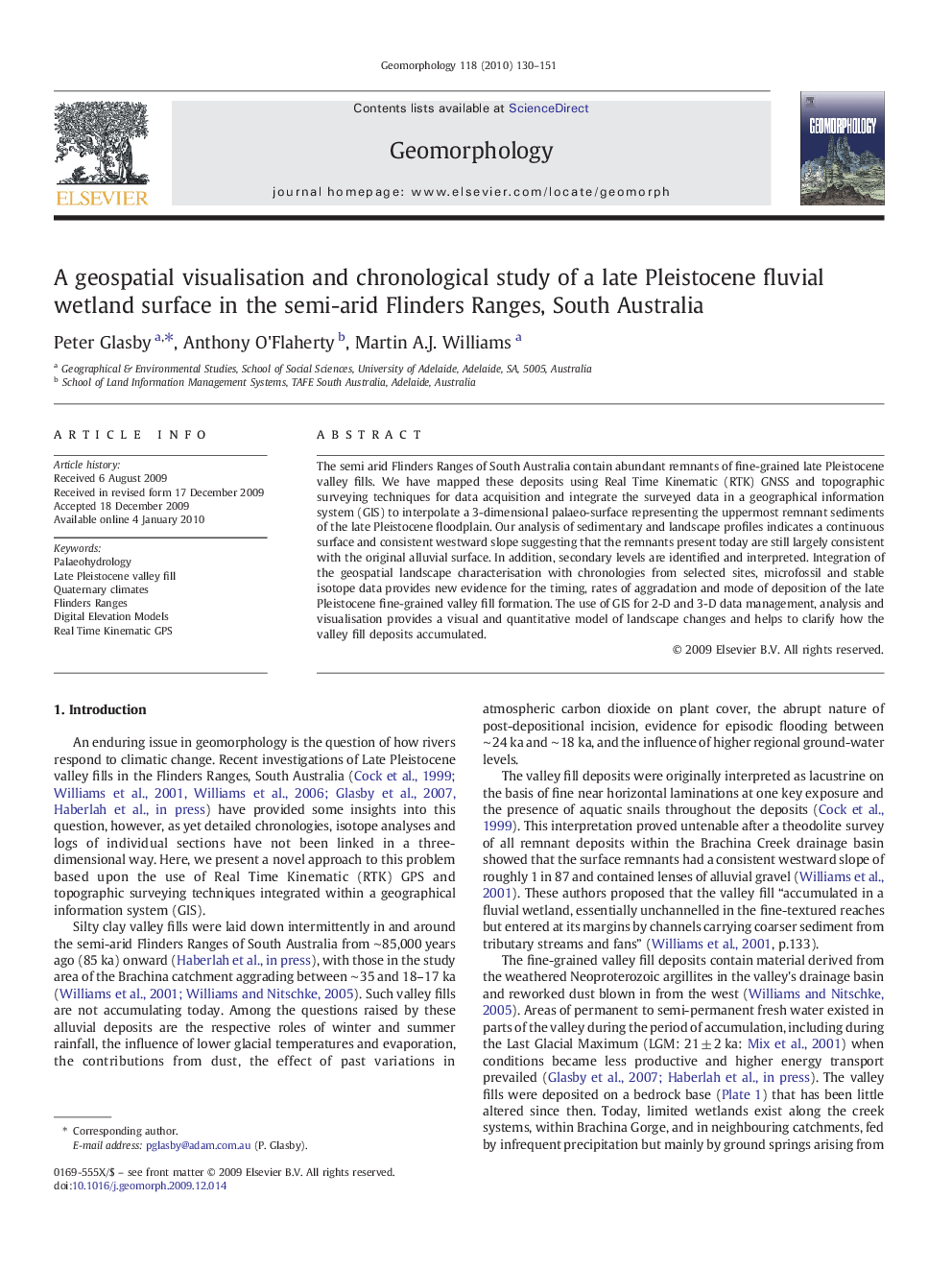| Article ID | Journal | Published Year | Pages | File Type |
|---|---|---|---|---|
| 4686056 | Geomorphology | 2010 | 22 Pages |
The semi arid Flinders Ranges of South Australia contain abundant remnants of fine-grained late Pleistocene valley fills. We have mapped these deposits using Real Time Kinematic (RTK) GNSS and topographic surveying techniques for data acquisition and integrate the surveyed data in a geographical information system (GIS) to interpolate a 3-dimensional palaeo-surface representing the uppermost remnant sediments of the late Pleistocene floodplain. Our analysis of sedimentary and landscape profiles indicates a continuous surface and consistent westward slope suggesting that the remnants present today are still largely consistent with the original alluvial surface. In addition, secondary levels are identified and interpreted. Integration of the geospatial landscape characterisation with chronologies from selected sites, microfossil and stable isotope data provides new evidence for the timing, rates of aggradation and mode of deposition of the late Pleistocene fine-grained valley fill formation. The use of GIS for 2-D and 3-D data management, analysis and visualisation provides a visual and quantitative model of landscape changes and helps to clarify how the valley fill deposits accumulated.
